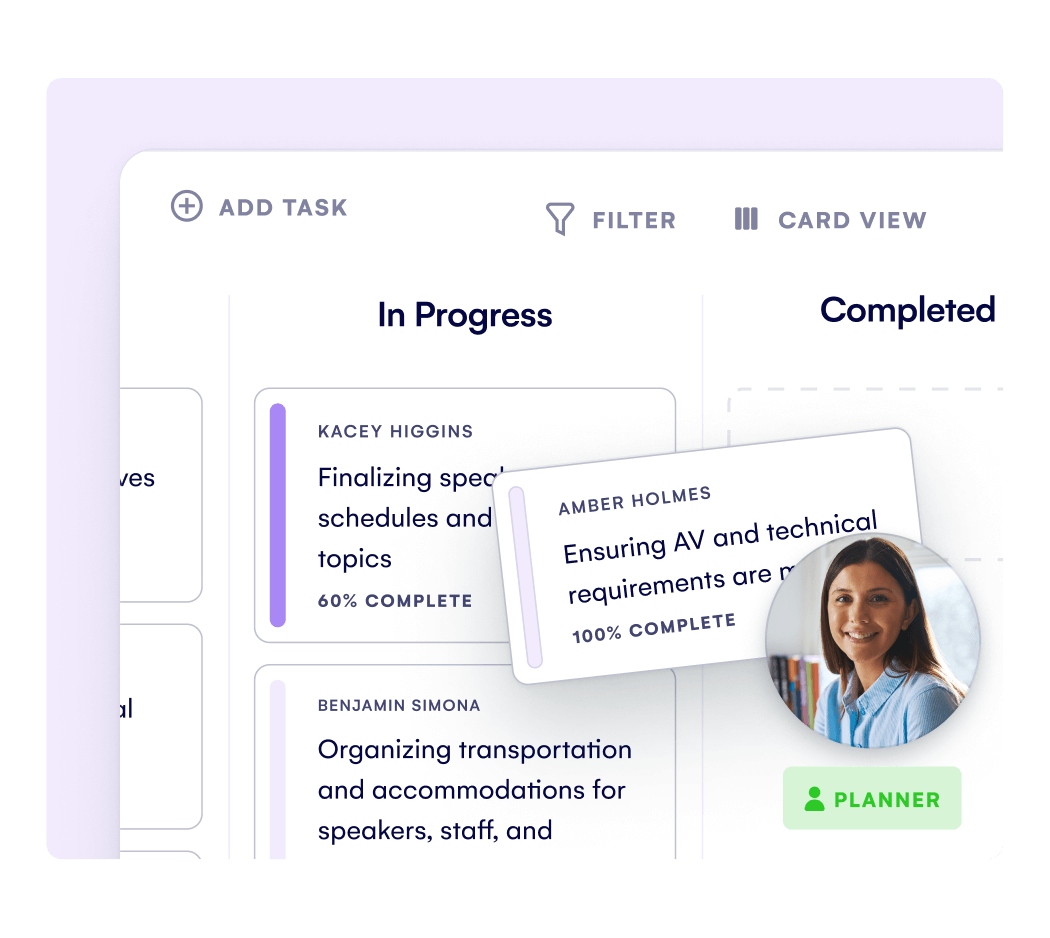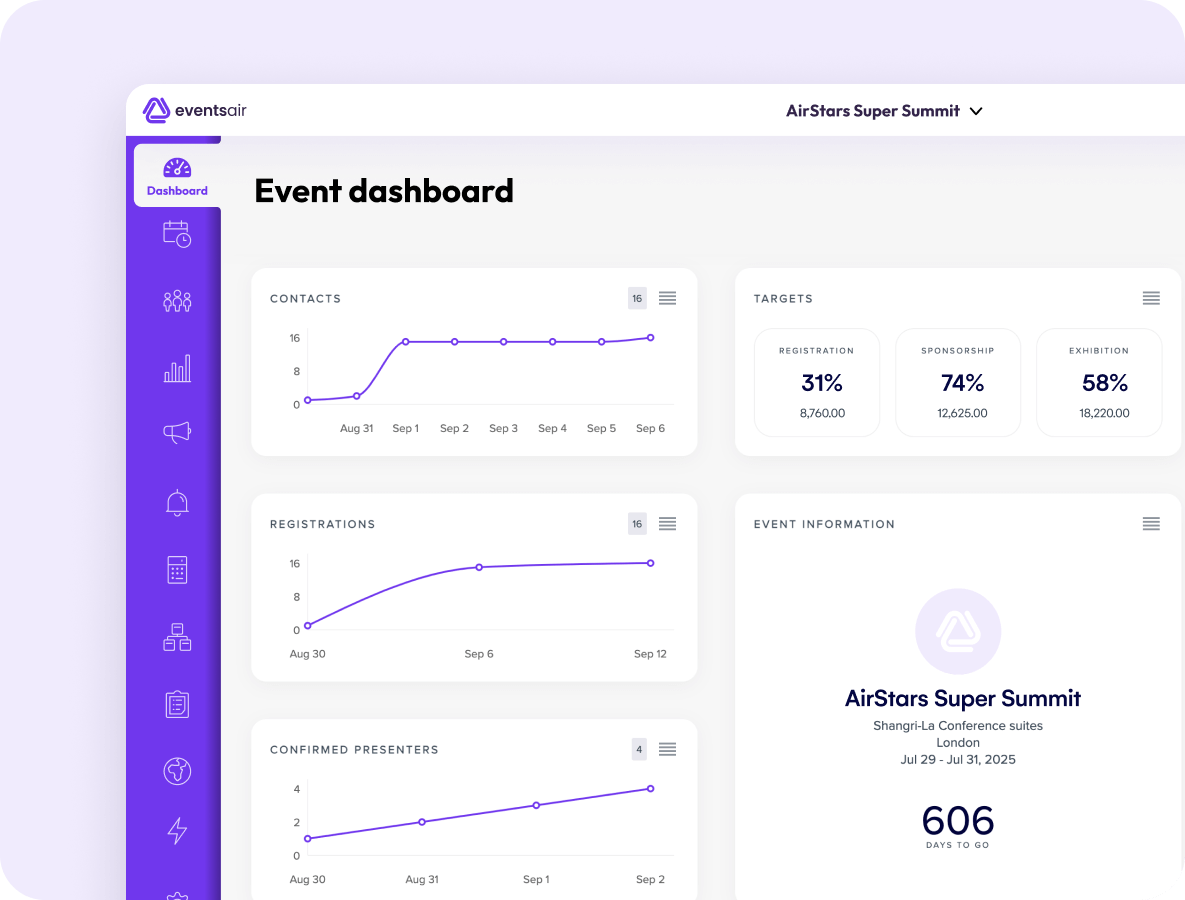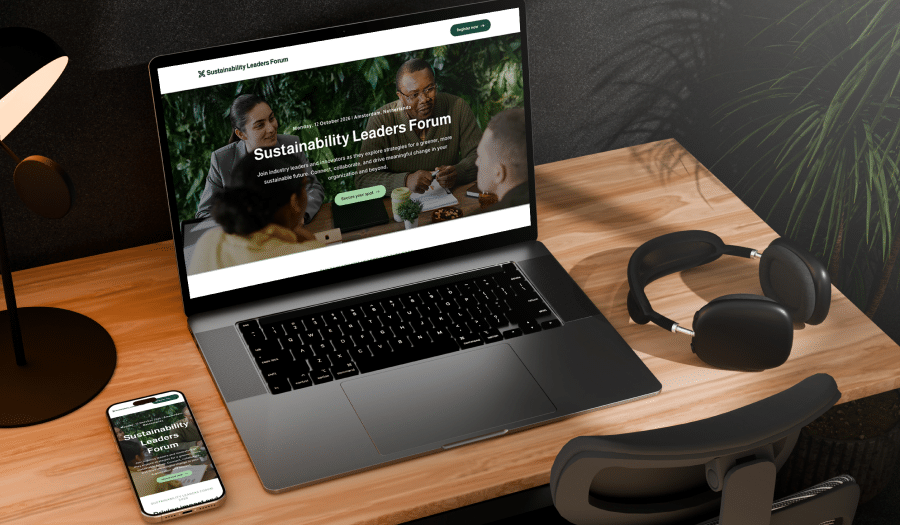
Creating an event proposal is a crucial step in securing approval and resources for your event. We understand that a well-structured proposal not only presents your ideas but also convinces stakeholders of the event’s potential success.
When crafting your proposal, it’s essential to include key details such as the event’s purpose, budget, timeline, and expected outcomes. These elements help clarify your vision and align everyone involved.
In this EventsAir guide, we’ll walk you through the process of planning your event proposals and bringing them to life for a smooth, successful execution.
What is an event proposal?
An event proposal is a strategic document that outlines your event’s core elements. It covers purpose, target audience, budget, timeline, and logistics. The proposal serves as your main tool for securing all-important stakeholder approval and support.
A successful event proposal delivers three outcomes:
- It transforms your event concept into an actionable plan
- It demonstrates the event’s value to decision-makers
- It creates alignment between all parties involved
A strong proposal acts as your event’s blueprint. It helps you identify potential challenges early, create clear accountability for team members, set realistic milestones for execution, and establish measurable success metrics.
Components of an event proposal
The foundation of your proposal should include:
- Purpose: Clear objectives and goals aligned with stakeholder expectations.
- Target audience: Detailed profile of attendees and their needs.
- Budget breakdown: Comprehensive cost estimates and revenue projections.
- Timeline: Key milestones, deadlines, and buffer periods.
- Resource requirements: Staffing, venue, equipment, and other logistics.
- Success metrics: Measurable indicators to evaluate event performance.
How to create an effective event proposal
1. Define event objectives and goals
Every successful event starts with clear objectives and goals. Begin by identifying your event’s primary purpose — whether that’s:
- Increasing brand awareness
- Driving sales
- Fostering networking opportunities
… or something else entirely. Your purpose should directly align with your organization’s broader strategic aims.
Once you’ve established your purpose, translate it into specific, measurable goals. For example, if your purpose is brand awareness, your goals might include reaching a certain number of media mentions or social media impressions.
Understanding your audience is crucial for setting realistic objectives. Research their needs, preferences, and pain points. This insight helps you create goals that resonate with attendees while meeting stakeholder expectations. Consider using pre-event surveys to gather direct feedback from your target audience.
2. Create a detailed budget and timeline
Building a comprehensive budget and timeline keeps your event on track and prevents costly surprises. Start by breaking down your event into major financial elements — venue costs, staffing, marketing, and technology needs. For each category, estimate both fixed and variable costs.
Your budget should anticipate revenue streams:
- Ticket sales and registration fees
- Sponsorship opportunities
- Merchandise or product sales
- Additional services or upgrades
- Partner and vendor revenue sharing
Your timeline should map key deadlines:
- Vendor contracts and deposits
- Marketing campaign launches
- Registration milestones
- Content and material deadlines
- Setup and rehearsal schedules
Build flexibility into both your budget and timeline. Include a contingency fund (typically 10-15% of total budget) for unexpected expenses. Add buffer time around critical deadlines to accommodate delays or last-minute changes.
EventsAir’s pre-planning tools can help you build and track multiple scenarios, comparing actual expenses against projections in real-time. This data-driven approach helps you spot potential issues early and make informed adjustments as needed.
3. Identify stakeholders and responsibilities
Success requires getting clear on who’s responsible for what. Each stakeholder must understand their role, timeline, and deliverables from the start. A well-organized stakeholder map should include the following elements:
- List all key players with direct and indirect involvement — exhibitors, sponsors, vendors, speakers, and team members
- Specify each stakeholder’s responsibilities and set clear expectations for deliverables
- Create structured communication channels to share updates and gather feedback
With roles clearly defined, maintain momentum through:
- Using project management tools to track ongoing tasks and milestones
- Breaking large tasks into smaller, measurable goals with specific deadlines
- Monitoring progress regularly to identify and address potential issues

EventsAir’s task management tools simplify this process by centralizing assignments and tracking. The visual project boards help teams monitor deadlines and dependencies, reducing the risk of missed handoffs or delays.
4. Write and present the proposal
A winning event proposal leads with impact and backs it up with details. Start with a clear executive summary that captures your event’s value in under a page. Then build your case with evidence, following this structure:
Executive summary
- Core value proposition and expected ROI
- High-level overview of concept, costs, and projected outcomes
- Why now? Address timing and market opportunity
Main proposal body
- Event overview
- Purpose and objectives
- Target audience analysis
- Key success metrics
- Strategy and execution
- Marketing and promotion plan
- Content and programming details
- Timeline and milestones
- Financial plan
- Complete budget breakdown
- Revenue projections
- Sponsorship opportunities
- Risk assessment
- Potential challenges
- Mitigation strategies
- Contingency plans
Support your proposal with relevant data and visuals. Use charts for budget breakdowns, timelines for project phases, and mockups to illustrate event branding.
Also, make sure that the proposal you’re writing is fit-for-audience at all times. You know who you’re presenting to so keep the report and visuals focused on what stakeholders care about most — ROI, risk management, execution confidence etc.

When presenting, anticipate questions about costs, risks, and expected returns. Be ready to explain your thinking behind key decisions and how they align with organizational goals.
Step 5: Monitor and adjust as needed
Regular monitoring and adjustments allow for smoother execution and the ability to make necessary course corrections, ensuring the event is a success.
Even after the proposal is approved, continuous monitoring and adjustments are vital for event success. Regularly check progress against the budget, timeline, and stakeholder deliverables. If any issues arise, address them quickly and adjust your plans as necessary.
Additionally, maintain flexibility within your budget and timeline to handle any unforeseen changes or opportunities. During the lead-up to the event, continue to communicate with stakeholders and monitor task progress. Any feedback or concerns should be promptly addressed.
Best practices for creating an event proposal
Leverage historical data for accurate forecasting
Use data from past events to make informed predictions about budgets, timelines, and attendance. Historical insights can highlight potential challenges, such as vendor pricing trends, and uncover cost-saving opportunities, allowing you to create a more realistic and accurate proposal.
Ensure clear stakeholder communication
Keep stakeholders engaged and informed with regular updates. Use collaborative tools to share progress and gather feedback. Transparent communication minimizes the risk of misalignment, ensuring that everyone is on the same page and that issues can be addressed promptly to avoid delays or misunderstandings.
In EventsAir, Quick Reports are a great way to create a pre-filtered and accessible report that you can share with stakeholders and vendors to provide instant access to up-to-date information such as current registration numbers, or dietary requirements.
Build flexibility into budget and timeline
While planning is crucial, flexibility is key to handling unforeseen challenges. Build buffer periods into your timeline and allocate extra funds in your budget to accommodate unexpected costs. This adaptability allows you to manage last-minute changes without compromising the event’s quality.
Focus on event branding consistency
Your proposal should reflect the event’s branding, messaging, and overall theme. Consistency across visuals, content, and design elements ensures a cohesive experience for both stakeholders and attendees. This focus strengthens your event’s identity and builds trust with stakeholders who are familiar with the brand.
With EventsAir’s Brand Editor you can easily maintain consistent branding across all aspects of your event and edit, update, and customize whenever you need.
Use project management tools for task tracking
Effective task management is critical for timely event execution. Use project management tools to assign tasks, track progress, and ensure accountability. Tools like Gantt charts provide visual clarity on milestones and deadlines, improving coordination and reducing the risk of missed responsibilities or delays.
Bringing your event proposal to life
Creating a successful event proposal involves defining clear objectives, building a realistic budget and timeline, identifying stakeholders, and crafting a persuasive presentation. With these steps in place, you’ll have a solid foundation for securing event approval and ensuring smooth execution.
EventsAir offers a comprehensive platform that helps streamline each phase of your event proposal process. From budget forecasting and task management to custom event websites and real-time analytics, EventsAir equips you with the tools needed for planning and execution, making your proposal more convincing and your event a success.
Ready to craft an irresistible event proposal with EventsAir? Request a free demo today to see how we can help.
Best Practice | Event Planning & Management
See EventsAir in action
Discover why 12,000+ event professionals trust EventsAir to deliver effortless events, every time.




